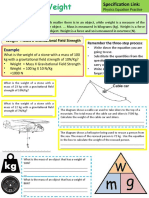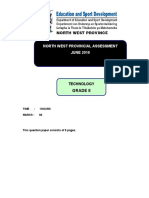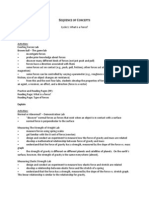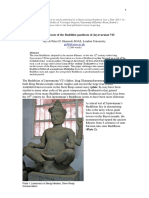0% found this document useful (0 votes)
350 views14 pagesForces Booklet
This document provides information about forces, including their size (magnitude) and direction. It discusses how these two characteristics of forces affect the motion of objects. The size of a force determines how quickly an object's speed changes, while the direction of a force determines the direction of motion. Forces are usually depicted using vectors, with length representing magnitude. Forces are measured in Newtons and objects experience a net force based on all individual forces acting on them. Hands-on activities are described to measure common everyday forces using a spring scale.
Uploaded by
Diana ArnoldCopyright
© © All Rights Reserved
We take content rights seriously. If you suspect this is your content, claim it here.
Available Formats
Download as PDF, TXT or read online on Scribd
0% found this document useful (0 votes)
350 views14 pagesForces Booklet
This document provides information about forces, including their size (magnitude) and direction. It discusses how these two characteristics of forces affect the motion of objects. The size of a force determines how quickly an object's speed changes, while the direction of a force determines the direction of motion. Forces are usually depicted using vectors, with length representing magnitude. Forces are measured in Newtons and objects experience a net force based on all individual forces acting on them. Hands-on activities are described to measure common everyday forces using a spring scale.
Uploaded by
Diana ArnoldCopyright
© © All Rights Reserved
We take content rights seriously. If you suspect this is your content, claim it here.
Available Formats
Download as PDF, TXT or read online on Scribd
/ 14

























































































